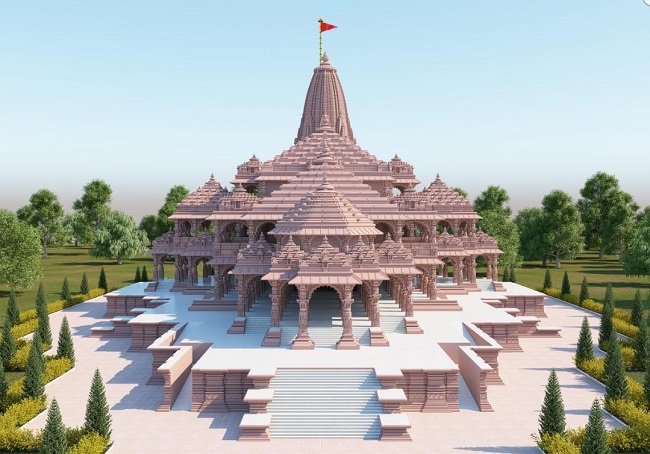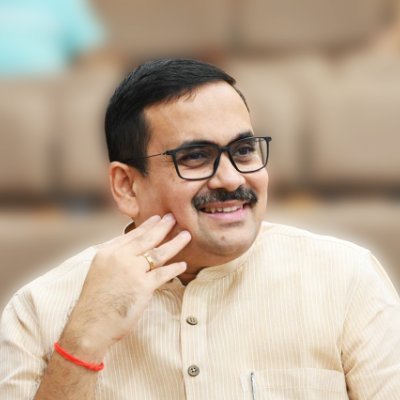Following in the footsteps of the reconstruction of Somnath Temple, construction of Ram Mandir is a culmination of efforts in resisting a distorted narrative of secularism
It augurs well that while much is being written and said on the epochal occasion of the foundation laying for Ram Mandir much is also being discussed about the reconstruction of the Somnath Temple in the early years of independence. Of the construction of Somnath, Sardar Patel, the unwavering moving force behind the effort had articulated two fundamental positions. When a debate ensued on whether the completely decrepit ruins of the badly desecrated temple be preserved by the Archaeological Department instead of building a new one in its place, the Sardar had argued that the “Hindu sentiment in regard to this temple is both strong and widespread” and “in the present conditions, it is unlikely that sentiment will be satisfied by mere restoration of the temple, or by prolonging its life. The restoration of the idol would be a point of honour and sentiment with the Hindu public.”
On another occasion, Patel, who clearly understood the intrinsic and deeper symbolism and necessity of the project categorically stated that the people “would never genuinely feel that freedom had come, nor develop faith in (their) future, unless Somnath was restored.” It was an era, when, as the BJP’s historic ‘Palampur Resolution’ of June 1989, noted, “Secularism had not yet become a euphemism for Hindu baiting, as it has become today.” The issue was discussed in the cabinet, there is no record of Pandit Nehru having opposed it then, and the project started in earnest. KM Munshi, the most ardent and consistent proponent of the reconstruction of Somnath had conceived of the project as a mega-multidimensional one.
NV Gadgil, free India’s first public works minister, involved from the early days of the project, recalls that Maulana Azad wanted that “the site should be preserved as it was.” But the majority consent among the discussants was that the temple be erected anew. Gadgil writes how, in Kathiawar, artisans of the Sompura community were enlisted for recreating in “stone the wealth of images and décor as it was in the olden times…” Sardar Patel raised an initial fund of five million rupees or so, and on “Gandhiji’s advice, it was decided to entrust the work to a trust which would have one representative from the Central Government.”
Noting the Mahatma’s position on the reconstruction of the Somnath Temple, the BJP’s seminal ‘White Paper on Ayodhya and the Rama Temple Movement’ (1993), observes that “When Sardar Patel conveyed to Mahatma Gandhi the decision of the Government to reconstruct the Somnath Temple, Gandhiji blessed the move but suggested that the funds for the construction should be collected from the public and the Temple should not be funded by the State. Thus, in Gandhiji’s view, it was not the reconstruction of the Somnath Temple that would offend the secular character of the Indian State, but the State funding of such a construction.” As freedom consolidated itself, the work of reconstructing Somnath proceeded ahead.
There was no recorded opposition to the project from any quarter, nor was any political opposition to it then engineered. Even the vicious communist packs and cohorts had not then unleashed propaganda against the move, as the BJP’s White Paper argues, “no Muslim leader, no secular party, objected to the construction of the Somnath Temple” then. The challenge to the project started post-Patel’s era. With Patel out of the scene, Nehru’s actual attitude and position on the issue started becoming apparent. “The moment Sardar Patel passed away, attitudes changed,” notes the Ayodhya White Paper, “Pandit Nehru now could not tolerate his colleague, KM Munshi, taking part in the Somnath Temple reconstruction although it was his own Government’s decision. Nor could he relish the idea of the President of India participating in the installation of the deity in the Temple whose construction was undertaken by a resolution of his own cabinet…”
Proponents of Nehruvianism have been unable to digest the hard truth that it was he who ensured that ‘secularism’ in the Indian context eventually came to mean being vehemently anti-religious, anti-majority and anti-Hindu. It is an attitude which his present generation dynasts have imbibed with remarkable alacrity and seriousness. Nehru’s accusation that Munshi has been resorting to “Hindu revivalism” by trying to reconstruct Somnath, and Munshi’s now-famous answer to him, that “I cannot value freedom if it deprives us of the Bhagavad Gita or uproots millions from the faith with which they look upon our temples and destroys the texture of our lives”, has been widely discussed and it is heartening to see how these are now being referred to again. Nehru’s first tantrum thus against the temple construction started within months of Patel’s passing.
Economical with the truth when it suited him, Nehru even denied that the issue was ever discussed in the cabinet. “I told Munshi”, recalls NV Gadgil, “that if anyone was responsible for the affair it was I and Vallabhbhai who supported me. I would, therefore, explain the affair to the Cabinet.” In the Cabinet meeting, Gadgil quoted from Cabinet reports “to prove that Nehru’s charge that the thing was done without informing the Cabinet was incorrect.” Both Maulana Azad and Jagjivan Ram concurred that the “matter was discussed.” As always his trenchant self, Gadgil reminded the Cabinet that reconstruction of the Somnath Temple, “had earned for the Government the goodwill of millions of people…Millions of Hindus are idol-worshippers and not intellectuals like Nehru” and “Some of us are subject to the weakness of a firm faith.” The discussion ended there, and the rest, as the cliché goes, is history. Rajenbabu, displaying an unshakable will, did the Somnath ‘Pran Pratishtha’, on 11 May 1951. When his term ended in 1952, Gadgil, understandably, did not get a second term in Nehru’s cabinet!
One of the defining and lasting legacies of Nehruvianism has been to give rise to this attitude which denigrated and branded the religious and social faith of the majority community as “communalistic and reactionary.” As the BJP’s White Paper on Ayodhya quotes Munshi, “in its (secularism) name, politicians in power adopt a strange attitude, which, while it condones the susceptibilities, religious and social of the minority communities, is too ready to brand similar susceptibilities in the majority community as communalistic and reactionary.” Episodes in the Somnath Temple reconstruction project, post-Patel, thus, Munshi argued, pointed to how, “secularism sometimes becomes allergic to Hinduism.” It was “evident from the conduct of Pandit Nehru”, notes the White Paper on Ayodhya, that “after the death of Sardar Patel that allergy to anything Hindu had become an integral part of the precept and practice of secularism in India.” It was this that led to decades of intolerance, of casting aspersions on the faith of millions of Indians and of belittling them. The Nehruvian consensus eventually threw up a political and intellectual class, which, in the words of philosopher historian Dharampal, “had no use for the spirit and determination of an awakened people, and they found such awakening to be a nuisance.”
The essential effect of Nehru’s vituperative opposition to Somnath, was, that it “interceded and interfered with”, as the BJP’s White Paper rightly argues, the “beginning in the cultural reassertion of the nation that was made” there, “and which could have defined the national identity and properly directed the destiny of the country…This distortion later legitimised the vote bank ‘secularism.'” That despite this distortion and its vehement expression in our political and intellectual life, Somnath could be successfully rebuilt, displaying the resilience of its driving vision and essence. In a sense, Patel, Munshi, Rajenbabu, symbolised the ‘Somnath spirit’ and the Ayodhya movement, thus, was the “continuation of the spirit of Somnath.”
Among the many narratives and dimensions that it liberated, the Ayodhya movement and the quest for Rama’s Temple at his birthplace, noted the BJP’s White Paper, decisively “smashed the political censorship on any attempt to debate the width and scope of what is secularism and nationalism.” The “legitimacy of the labels secular, communal, national with distorted meanings has been seriously questioned as has been the credibility of those who had usurped the authority to issue labels…” Those last of the usurpers are the ones who are whining at the long-awaited Bhumi Pujan, they realise that their monopoly has now been irrevocably rescinded.
Prime Minister Modi had said on the Ayodhya verdict that it was not a win or loss for anyone, but was a moment for strengthening ‘Rashtra Bhakti.’ Indeed a national narrative now being liberated from the stranglehold of a false, distorted, demeaning and domineering narrative of secularism, will strengthen ‘Rashtra Bhakti.’
Talking of India’s self-awakening in his immortal essay, “Bharatiya Chitta, Manas and Kala”, Dharampal spoke of the need to establish frameworks that, among other things, would ensure that the “people of India do not have to suffer the humiliation of seeing their ways and their seekings being despised in their own country.” In a sense, the Somnath effort in the early days of freedom had begun laying that framework, the construction of the Ram Mandir in Ayodhya is the first culmination of that beginning.
(The writer is the Director of Dr Syama Prasad Mookerjee Research Foundation)
Image Source: https://i2.wp.com/rkalert.in
(The views expressed are the author's own and do not necessarily reflect the position of the organisation)


